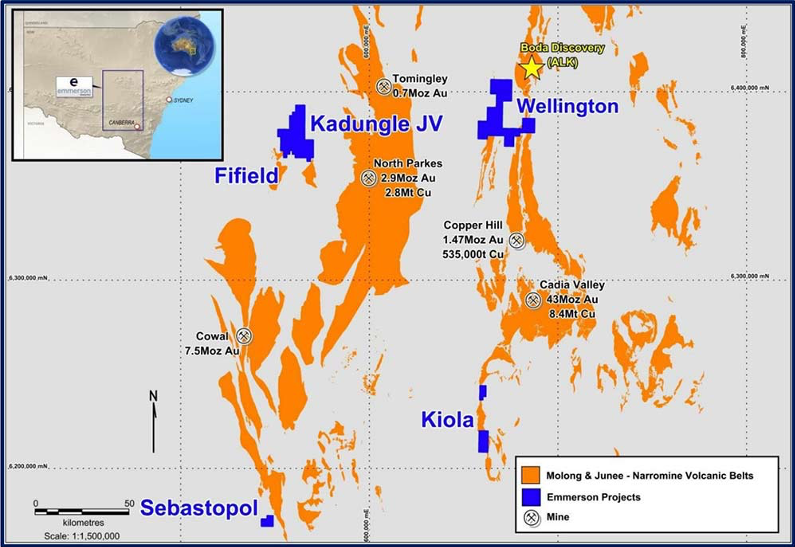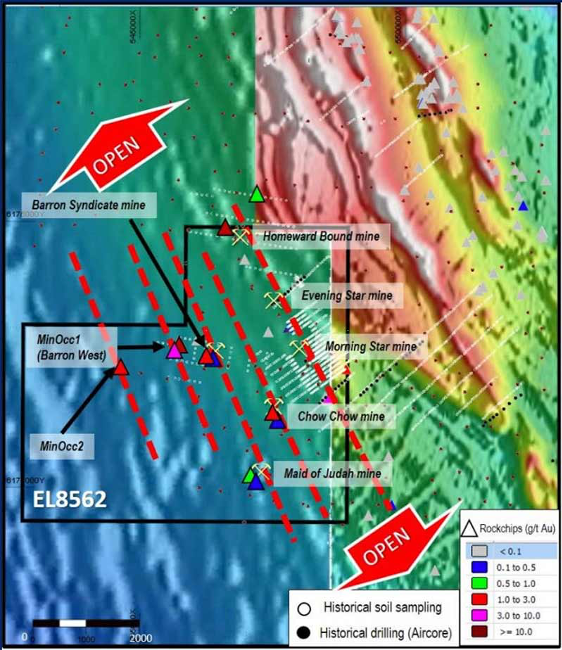Emmerson’s new alliance to accelerate gold-copper discoveries in NSW’s Lachlan Fold
Mining
Mining
Special Report: A strategic alliance between explorer Emmerson Resources (ASX:ERM) and Perth-based Longreach Mineral Exploration will apply cutting-edge tech, such as machine learning, to unearth new gold and copper opportunities.
The Emmerson team has a track record of finding gold deposits using systematic, science-based exploration.
These include the super high-grade Mauretania (20m at 38.5g/t gold) and Edna Beryl (8m at 157g/t gold) discoveries in the Northern Territory, now subject to a couple of lucrative royalty/profit share deals.
Through a number of joint ventures, Emmerson is also fast-tracking exploration across five early-stage gold and copper-gold porphyry projects in NSW.
And Emmerson is not a ‘Johnny-come-lately’ to the NSW porphyry excitement, moving into the Lachlan Fold Belt (LFB) about four years ago based on solid science.
The LFB’s highly prospective Macquarie Arc hosts +80 million ounces of gold and +13 million tonnes of copper, but these resources are mostly in areas of ‘outcrop’ or limited cover.
Emmerson’s five exploration projects contain many attributes of the large known deposits within the Macquarie Arc, but remain underexplored due to historical impediments like overlying cover (farmlands and younger rocks).
This is where opportunity lies.

“The Longreach group consists of highly successful oil and gas exploration and service companies, with great capacity and capability in the application of machine learning across big data sets such as 3D seismic imaging and interpretation, airborne geophysics and deep learning tools,” Emmerson managing director Rob Bills says.
“This combined with Emmerson’s systematic science-based track record of discoveries in the mineral industry provides a powerful partnership to generate or identify new gold and copper opportunities.”
Emmerson will remain the principal operator and exploration manager, with both parties equally sharing the costs.
Either party can submit a project and if unanimously accepted, it becomes a strategic alliance project (SAP). Providing the SAP meets agreed milestones, the project then becomes the subject of a joint venture between the parties.
The historic, high-grade Sebastopol gold project in NSW will be the first alliance project to be drill tested in 2020.
The nearby Gilmore Fault Zone (GFZ) – an ancient ‘conduit’ for mineralised fluids — is recognised as being a significant control to the gold mineralisation in the area, including the 7.5-million-ounce Cowal deposit.
Several of the GFZ’s ‘second order’ structures have been traced over 4km at Sebastopol which hosts a cluster of historic gold mines.

Although there are seven historic mines identified, most of the gold was derived from the Morning Star Mine, which produced +30,000oz from 1869 to 1935.
It was mined to a depth of 110m and had a strike length of 335m, with mining widths of up to 3m.
It appears there were enriched gold shoots with gold grades up to 151g/t and mineralisation still open at depth, with grades ranging from 2.3g/t to 25.3g/t gold, Emmerson says.
Recent sampling by Emmerson of quartz veins from the Barron West waste dump assayed up to 27.8g/t gold.
This field has seen very little modern exploration or drilling.
Seven RC drill holes for a minimum 1,200m will now test beneath the Morning Star, Barron Syndicate, Chow Chow and Maid of Judah mines, plus some new targets identified during recent field work, Emmerson says.
This drilling is specifically aimed at testing the grade and continuity before moving to the next stage — likely seismic geophysics and diamond drilling.